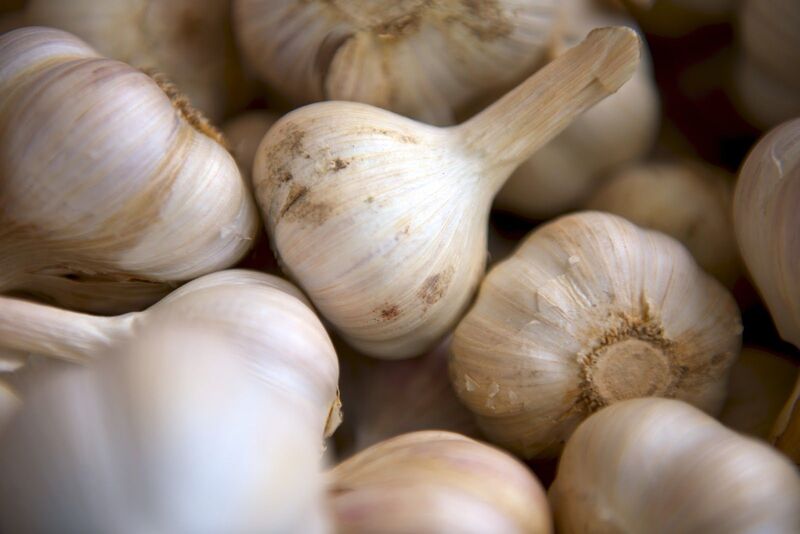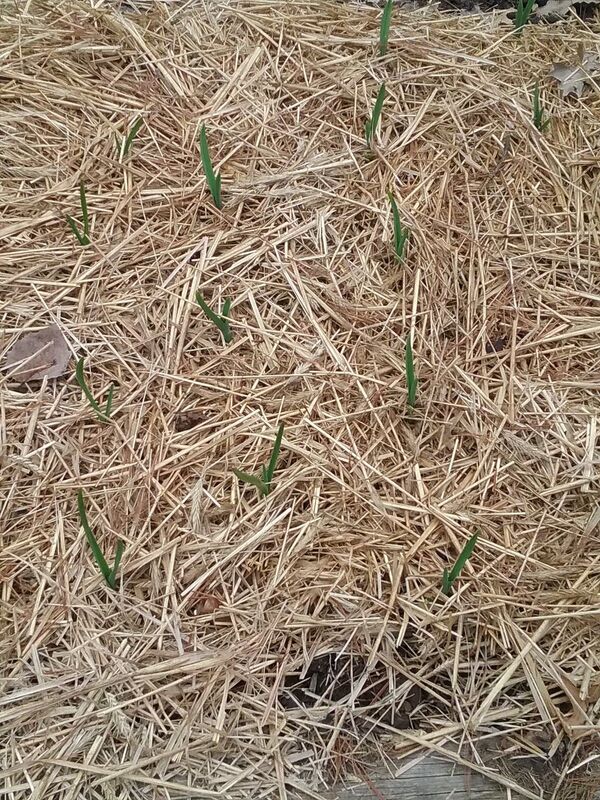|
Garlic is part of the Onion family. It is a herbaceous perennial that we grow as an annual in Wisconsin. Garlic can be grown in Wisconsin’s Zone 3 and warmer to Zones 6-7; however, you need to make sure the cultivar is hardy for your zone. Garlic is a monocot with basal leave formations. Garlic is comprised of multiple cloves. Cloves arise from an axillary bulb. Leaves are solid, flattened and folded. Growing Habits
Garlic prefers full sun, and grows best in 20% organic matter. Sandy soils are better than clay soils. Due to the shallow root system they tend to dry out quickly, so regular watering is best. Bulb expansion can be impeded in heavy clay soils, especially if they dry out. Prepare the soil well before planting to provide a loose growing bed for bulb growth. Garlic does not compete well with weeds, keeping weeds down in essential to good yield. Plant garlic in an area where you have not planted onions, chives, leeks, shallots or garlic for the past four years. Different Kinds of Garlic Garlic has two cultivars, hardneck and softneck. Hardneck types are quite similar to wild garlic. They produce a woody flower stalk – called a scape – while softneck types do not. If flowers are produced, they usually abort and form bulbils (small, aerial cloves) instead. Although these bulbs can be planted, the bulbils they form will be very small, requiring two or three years to reach usable size. Some types may not produce large bulbs unless the flower stalks are removed. Hardneck types typically have four to 12 cloves in a single circle surrounding the stiff stalk (which can’t be braided) and generally do not store well. These types perform best where winters are long and the season of vegetative growth is relatively short. Within this group, there are three further subdivisions:
Some varieties that do well in Wisconsin are:
Softneck types generally don’t form a scape and therefore the soft necks can be braided. These types are better adapted to areas with long seasons and mild winters. They typically produce 10-40 cloves and often can be stored for 6-9 months. Planting Instructions Garlic is usually planted with cloves. Purchase bulbs from national or local garlic seed producers. Separate individual cloves a day or two before planting. This can prevent disease. Plant about 2 weeks around the first killing frost or when the ground is around 50⁰. Separate the cloves and plant 2-3 inches down about 6 inches apart. Plant cloves pointed side up. Cover beds with three to four inches of leaf or straw mulch to prevent fluctuating temperatures during the winter and early spring, and to help control weeds. Remove the mulch in the spring after the threat of hard freezes is over to help the soil warm up. You can also leave it in place to help with weed control and preserve soil moisture. If the soil is 2% organic matter than apply Nitrogen 60 lb/acre, then apply again in the spring two weeks after the scapes emerge, then a 3rd application one month after the second application. Proper watering will help growth of your garlic plants. Soak the soil thoroughly when watering, to a depth of at least one inch each week during the growing season, start to cut back in mid-July to Mid-August. Sandy soils require more frequent watering. Stop watering two weeks before harvest to avoid staining bulb wrappers and promoting disease. Insects and Diseases Garlic has few insects or diseases. To avoid diseases, plant only healthy cloves, manage weeds in the garden and take care not to injure garlic bulbs while working in the garden. Harvesting Knowing when to harvest is a little tricky, since different varieties mature at different times. Harvest too early and the small bulbs will not store well; harvest too late and the cloves may pop out of their skins, making them susceptible to disease. In general, garlic is ready to harvest when half of the leaves have turned brown. You can dig a couple of “test” plants to make sure their cloves fill the skins. Loosen the soil around the garlic, do not pull out of the ground. Cure in a well-ventilated room for 3-4 weeks. Hard necked garlic can keep at room temperature for 3-4 months, however at 32 degrees garlic can keep up to seven months. Article by: Jill Washkuh, Master Gardener Volunteer Intern
0 Comments
Leave a Reply. |
|
| North Country MGV | gARDEN bLOGS |
Location |
|


 RSS Feed
RSS Feed